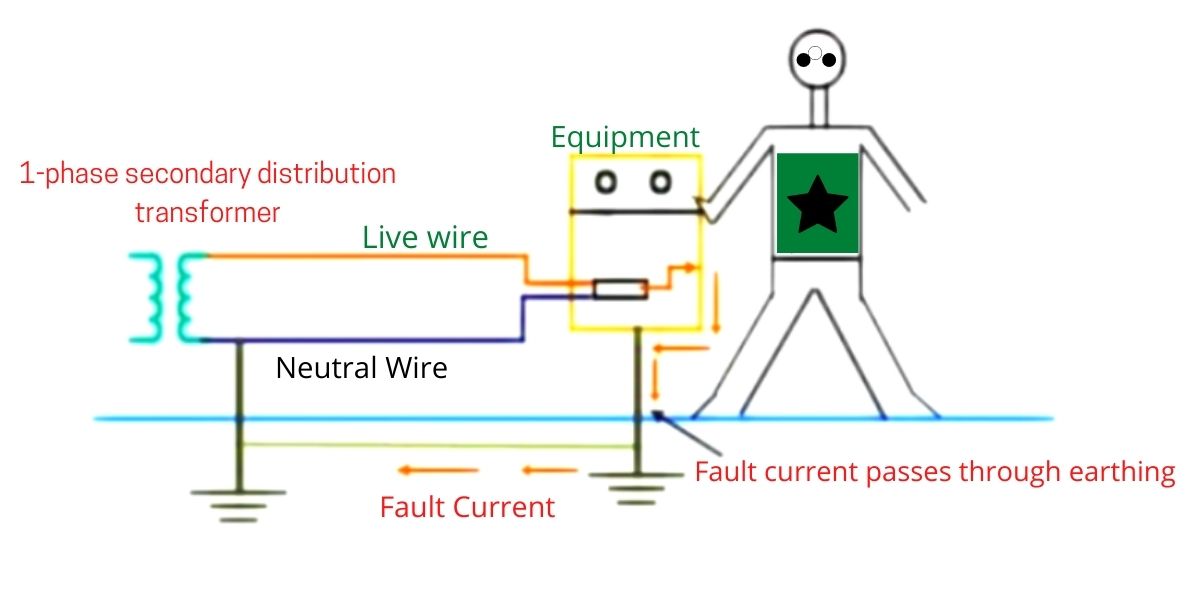What is the Earthing?
In this article we are going to discuss about what is the earthing ? Purpose of Earthing and Different methods of earthing.
Introduction
Earthing in general terms means connecting a piece of electrical equipment to general mass of earth through a lead having negligible resistance.
Selection of earthing is very important for human safety, the safety of houses, and various electrical equipment.
Earthing brings the body of electrical equipment to zero potential and thus provides safety to the person operating the equipment from electrical shock.
When an earth fault occurs then a heavy current flows through the circuit and due to this heavy current fuse in the circuit melts or the MCB of the circuit gets put down and the faulty circuit will be disconnected from the supply.
Definition
Earthing is defined as the process of connecting a non–current carrying metallic parts of electrical equipment or the neutral of the supply system to the earth.

Need of Earthing
- Earthing provides a surface around and under a substation that is at a uniform potential and is approximately equal to zero potential or absolute earth potential as possible.
- It provides protection from electrical shock to the people.
- Earthing also improves the performance of an electrical system.
- Earthing is required to maintain the line voltage constant.
- It also serves as a return conductor for telephone and fraction work.
Earthing is broadly classified as system earthing and Equipment earthing.
System Earthing – In this type of earthing the conductor having current is connected to the ground. System earthing is used to protect from lightning and voltage stabilization.
Examples – Earthing in substation, Generation station.
Equipment Earthing- This type of earthing is usually done in houses to protect the household equipment.
Types of Earthing
Plate Earthing
- In this type of earthing a plate is placed vertically in the ground and then an earth electrode is attached to it.
- Here in this earthing a layer of 15 cm of salt and a layer of 15 cm of coal is placed below the earth plate.
- The earth plate used here is generally made up of copper of size 60 cm × 60 cm × 3.18 mm and this plate is embedded 3meter in the ground.
- Galvanized iron (GI) is also used as an earth plate having dimensions 60 cm × 60 cm × 6.3 mm.
- Generally for normal work galvanized iron plates are preferred due to its lower cost in comparison to copper plates of dimension 30cm × 30cm which is found to be the most effective earth electrodes as these electrodes are not affected by the soil moisture.
- But these copper plates are generally not due to its high cost and galvanized iron is preferred over the copper plates.
Rod Earthing
- In this type of earthing rod of zinc or copper is used as an earth electrode.
- This type of earthing is used especially in hilly areas where earth pit digging is difficult.
- Rod used in this earthing is solid, not hollow.
- Here the rod is placed dipper up to 1meter to 1.5 meters.
- The dimension of the rod used in this case is 12 mm to 20 mm.
- This type of earthing is the cheapest and less time taking.
Pipe Earthing
- In this earthing GI pipe having a diameter of 38 mm and length of 2 meters is used.
- Here holes (12 mm diameter) are made in the GI pipe and earth wire of 8 swg of GI are fastened to the top section of the pipe with the help of nut bolts.
- The GI pipe is placed up to a depth of 2.5 to 3 meters from the earth’s surface.
- Three layers of 15 cm of salt and coal are used around the GI pipe.
- The layer of a mixture of salt and coal is used to improve the soil condition and efficiency of the earthing system.
- The pipe is always placed vertical and if any rocks come in the pipe’s path then the pipe would be bent a maximum of up to 30◦.
- In the case of pipe earthing the earth wire connection with the GI, the pipe is above the ground so it can be checked for carrying out continuity tests when required but this is difficult in the case of plate earthing.
Value of Earthing electrodes at various places
| S.NO | Place | Value of Earthing Electrode |
| 1. | Large power station | 0.5 Ω |
| 2. | Medium power station | 1 Ω |
| 3. | Small power station | 2 Ω |
| 4. | Domestic application | 1 Ω |
Methods to reduced resistance of the earth electrode
- By pouring water into the surface where the earth electrode is dipped.
- By increasing the depth of the rod or plate.
- By adding salt and charcoal (salt and charcoal maintain moisture for a longer period of time).
- By increasing the area of the plate we can reduce the earth electrode.
- By connecting plates in parallel because by connecting plates in parallel equivalent resistance of the plate becomes smaller.
Frequently Asked Questions (FQA)
Q1. Value of resistance of earthing electrode for large power station is
Ans. 0.5Ω
Q2. Neutral earthing is also called as
Ans. System earthing
Q3. Earth wire is of how much SWG?
Ans. 8 SWG
I hope you like this post on what is the earthing? To understand more topics related to electrical and electronics engineering click on the link given below.
